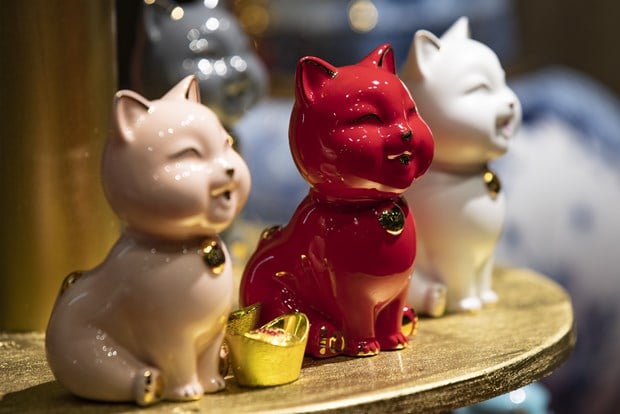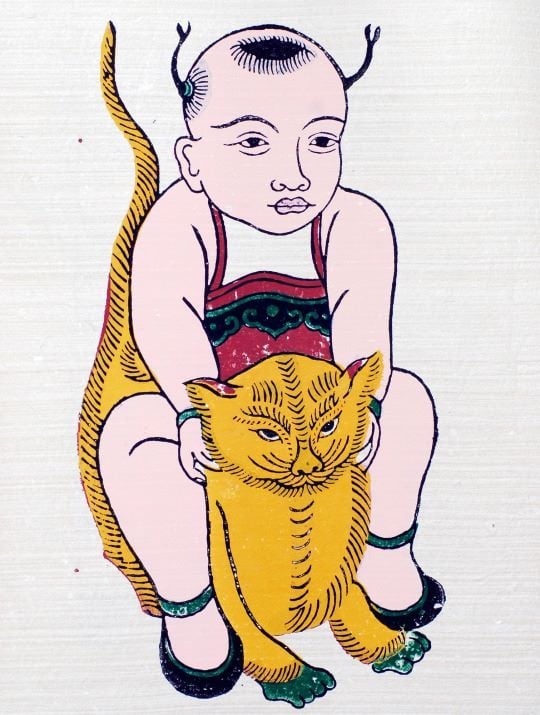
Vietnamese culture and Year of the Cat
Vietnam welcomed the Year of the Cat on January 22, 2023. Since ancient times, the cat has been part of Vietnamese culture and can be found featured in literature and the arts, among others.
Across the country during the Lunar New Year, or Tet, streets are decked out with statues of beautiful cats, both individuals and families, and shops are stocked full of cat-themed decorations.
The 12 animals of the zodiac
In Vietnamese culture, the Cat represents a gentle, friendly, and close pet. Of the 12 animals of the zodiac, the Cat lies fourth, behind the Tiger and before the Dragon.
The Chinese call this lunar year the Year of the Rabbit, but the Vietnamese opt for the Cat. It is hoped this Year of the Cat will bring good luck and smooth sailing to Vietnam.
Rice is a huge part of Vietnamese culture and daily life, and while rats can harm crops, cats can help people minimize the threat, which is why they are so popular among Vietnamese people.
Meanwhile, the feng shui cat or fortune cat is a popular symbol among many people as they believe it can bring good luck, happiness, optimism, and good health while warding off bad luck. That's why people often display Vietnamese cat statues in their homes to wish for good things for their families. The animal is also said to help people be lucky in love.

Cats at a shop present happiness and prosperity. Photo courtesy of Vietnam News Agency.
The perception is that those who are born in the Year of the Cat (1939, 1951, 1963, 1975, 1987, 1999, 2011, 2023) are often more active, hard-working, and easy to get on with. They are seen as intelligent, agile and subtle people, with far-sighted vision. They often treat people with enthusiasm and kindness and are always ready to help others when they are in need.
At work and in life, these people are quick-witted, intelligent, imaginative, and clear-headed, so they can succeed in areas that need precise calculations, business, or art. Being optimistic, honest, and easy to forgive, and adapting to any situation, are also their outstanding characteristics. Most of them are sensitive and emotional and have a rich internal life.
Cats are clean animals, characterized by having a careful, neat, and agile nature, and like to lie in warm places and sunbathe. Cats in Vietnamese culture are the hero of the night as they often go out to hunt thanks to their outstanding eyesight. They are also stealthy and good climbers, making it easy for them to stalk and catch their prey.
Dong Ho painting
Dong Ho painting, or Dong Ho folk woodcut painting, is a line of popular Vietnamese folk art originating in Dong Ho village, Bac Ninh province near Hanoi.
Like other popular animals, the Cat is frequently featured in Dong Ho paintings. One of these pictures is “Boy with cat” that features a cozy Lunar New Year setting filled with happiness, luck, and prosperity. Animals close to Vietnamese villages like buffalos, roosters, and cats are symbols of happiness, prosperity, and hard work.

“Boy with cat” Dong Ho painting. Photo courtesy of Bac Ninh province’s portal.
But eating cat and dog meat is legal
Eating cats and dogs is not prohibited in Vietnam. However, more and more Vietnamese are against it and the government has been seeking to discourage it.
However, it is not that common and visitors to the nation are unlikely to stumble across a dog or cat restaurant.
The most popular religion in Vietnam is Buddhism, which prohibits followers from eating dogs. Younger generations are becoming more and more influenced by western culture, and are not interested in eating dogs or cats, while there is no longer a shortage of food like during the wars.




